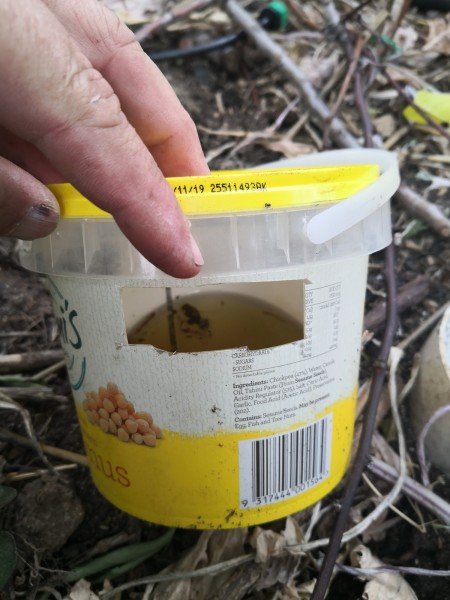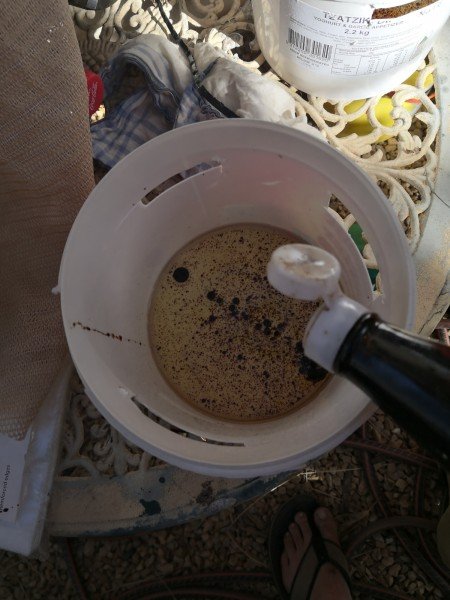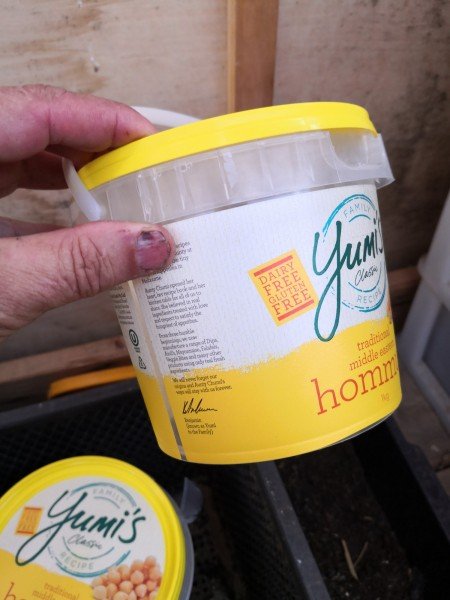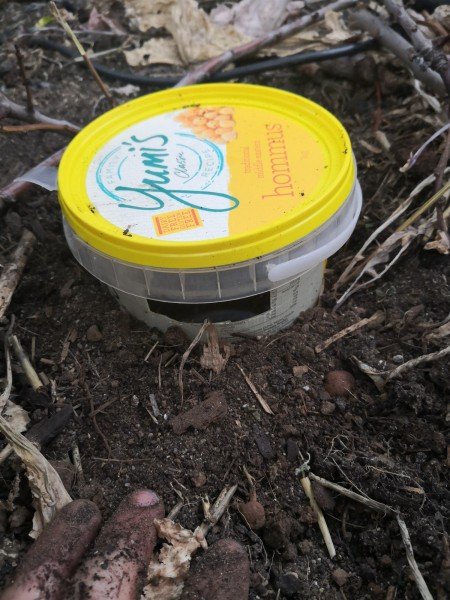Hi Hive DIY and gardening enthusiasts! Here's another simple DIY project from Ligaya Garden.
This one is about how to make a DIY slug, snail and earwig trap.
Lets' have a look!

Throughout each year there is stream of hungry mouths looking to take more than a bite from our plants. Not happy to live on the rich organic matter that forms our garden, little eyes drift toward our choicest seedlings.
The good news is that one trap design lures and catches many bugs whether they be Slugs and Snails in Winter or Earwigs in Summer. All you need to do is change to the target critter's preferred bait.
The bait

The right bait is essential to the success of these traps. In Winter, it’s beer and in Summer, its vegetable oil. To be honest, to my knowledge, the bugs don't care how the trap looks, just that the bait is inside it.
I’ve lured Earwigs to their doom for several years with Linseed oil. A couple of years back, a friend told me about her successes using a mix of used vegetable oil and Soy sauce.
I tried it last year and although it didn’t do as well as the Linseed oil in luring the critters to their doom, it did its job quite well and it’s much cheaper too!

I’m not sure exactly the role the Soy sauce has as it sinks straight to the bottom if the oil where the smell is masked (to we humans at least). I’ve no doubt that Earwigs have a different sense of smell to we people. That’s probably all it is. I did try fresh vegetable oil too but it didn’t do as well as the used stuff and that, by itself didn’t do as well as when Soy sauce was added.
Slugs and Snails just love beer. Beer traps are have a long history in gardening.
I did a bit of digging online to see if there wasn’t something else I could whip up from what we had around the house. Beer can work out to be pricey if we’re only using it for bug bait. The discovery was that the slimy critters like the yeasts and sugar (and possibly the carbon dioxide) in beer. I thought ‘I have yeast and sugar so why not just mix that in water and put it in the traps’? It works, but not as well as beer.
Trap design
This is a simply a container with holes cut into the sides large enough for the smell to get out and the bugs to get in.

I reuse hummus containers that a friend gives us, margarine containers, even the containers that soluble fertilizer come in. As long as it is a few centimetres deep and has a lid that locks on firmly, you could use anything.

The holes are kept relatively small in order to help keep dirt and leaves and the like out of the oil. I find about 1 cm high by about 3 cm across does well. If your problem is Snails, you’ll have to make the hole big enough to handle them.
The holes should be towards the top of the container so that there is a deep enough reservoir in the bottom to hold a couple of centimetres of oil and (hopefully) the bodies of a hundred Earwigs or Slugs. That’s wishful thinking but hey, that’s fine.
I like lid so that it keeps rain and dirt out but it’s not necessary. You can leave them open but will be always cleaning them out. You can leave the container open and lay a small piece of anything over the top to keep stuff out of the oil.
Using the traps
To use the traps, simply bury them into the ground so that the holes are about at soil level.

You don’t even need to bury the traps, the pest bugs will find their way anyway but we want to make it as easy as possible for them to enter. The traps will continuously knock off quite a few bugs every night with no further effort.
When you’ve a lot of bugs in the bottom, either fish them out and feed them to your chickens or pour the entire contents into the chook run or onto your compost.







